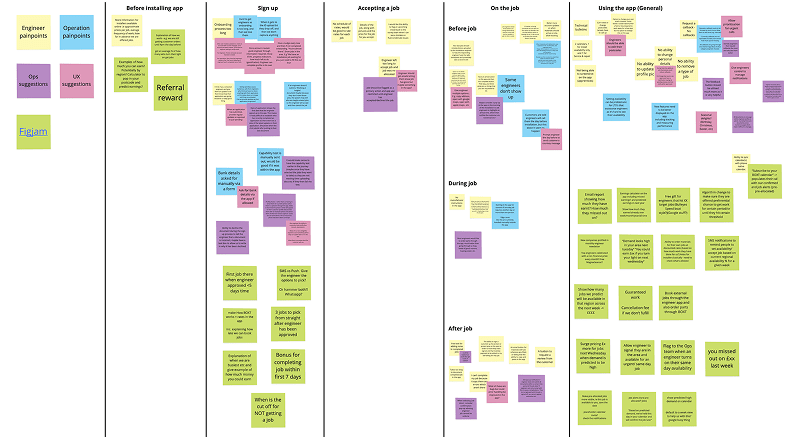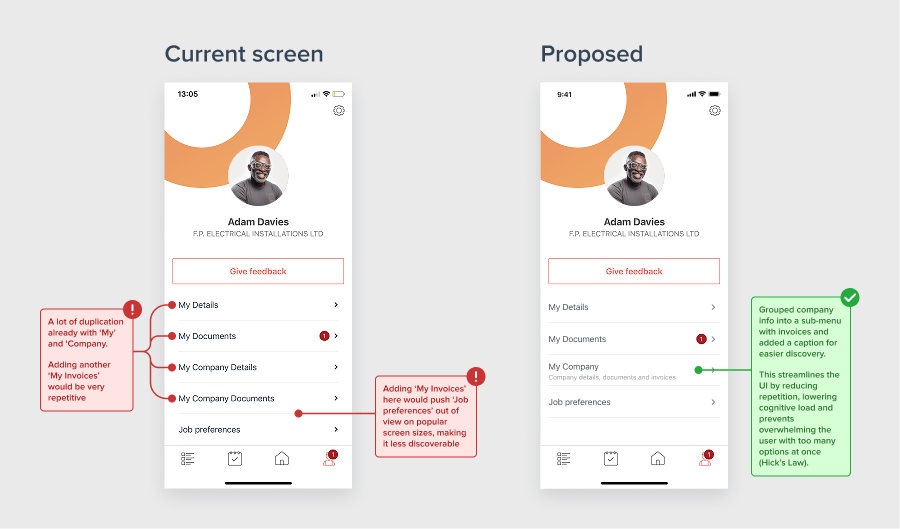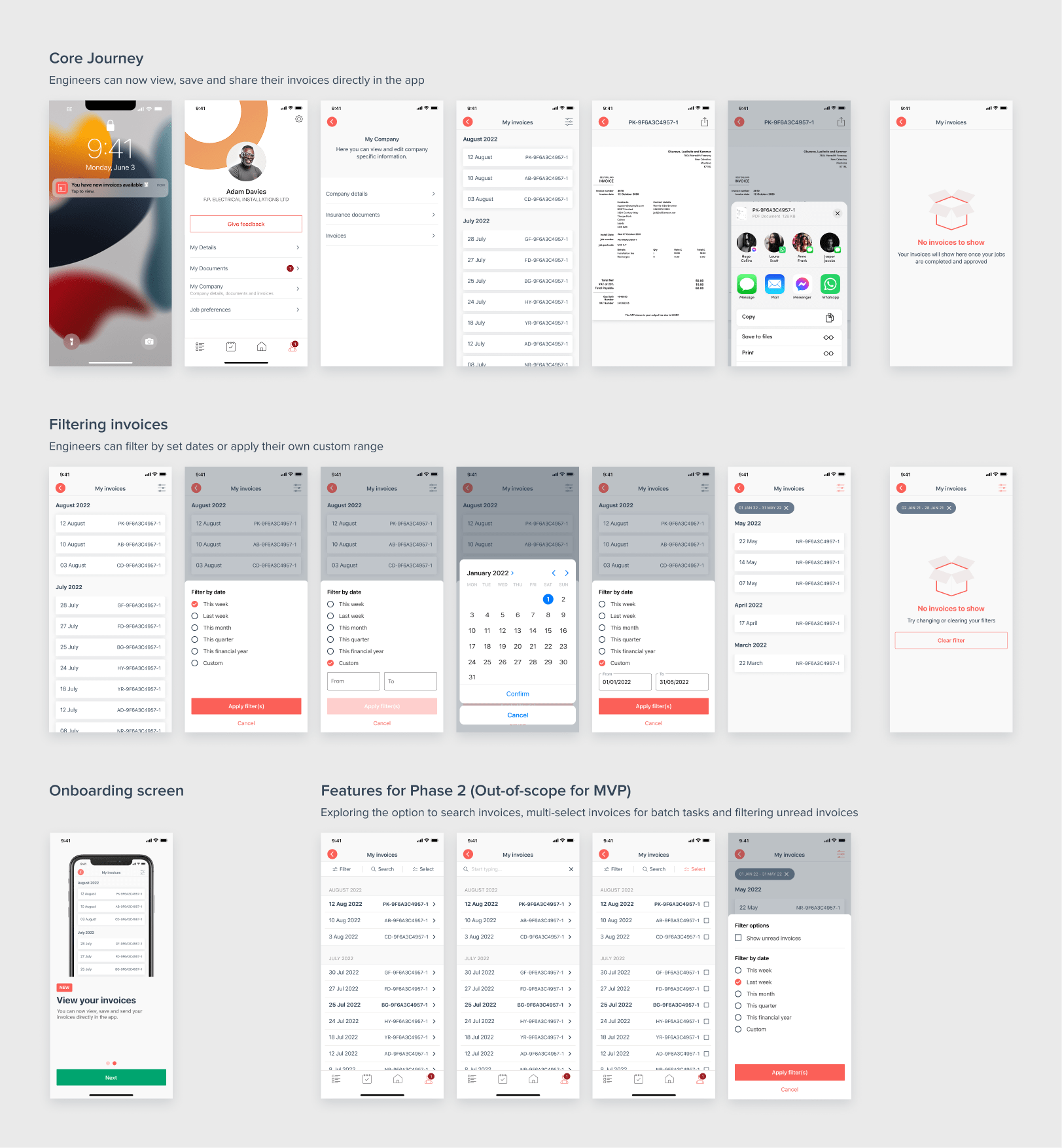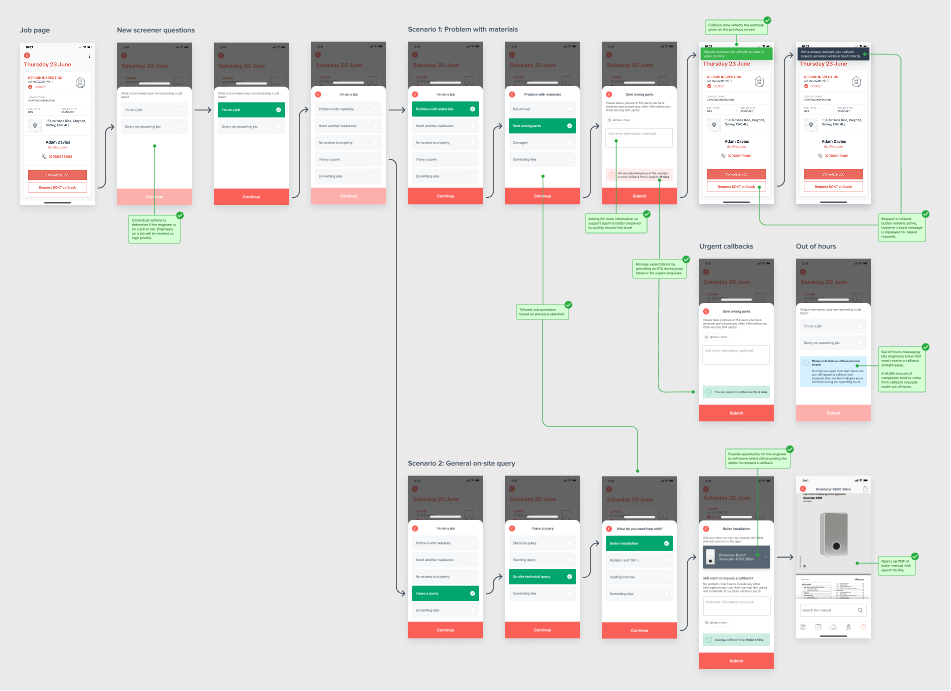
UX, UI, Prototyping, App · BOXT · 2022
Who is BOXT? Often dubbed the “Uber of heating", they simplify the process of buying boilers, heat pumps and solar panels online at fixed prices with seamless installation.
I worked across all digital touch-points of the business, including the customer website, the admin portal used by the operations team and mobile apps for both customers and engineers.
This case study specifically focuses on my work on the Engineer app.
I was tasked with improving the engineer app. There were already known issues engineers were facing, and while addressing those, the business also wanted to explore what further enhancements could be made.
My first step was to understand the current end-to-end journey for engineers so I mapped out the entire flow, from installing the app through to completing jobs. This helped me visualise the full experience, identify immediate pain points, and raise key questions for discussion.

This flow became an essential tool in workshops, allowing stakeholders to quickly pinpoint friction points and alignment gaps.

One of the outputs from a workshop which identified painpoints from an engineer perspective as well as operations.
After prioritising issues with the team, I began exploring solutions to three key problems:
Engineers receive invoices via email after every job, but many reported not receiving them, often due to issues with their email provider or the emails going into junk folders.
This improves the engineer’s experience by giving them direct access to all their invoices and reduces calls to customer support.
The first step was to determine where invoices should live within the app. The logical choice was the profile page, but I also considered how this addition might impact other options.

Once the placement was confirmed, I designed the entire flow, which went live shortly after.

A third of engineers were unhappy with the callback feature. The wait time was either too long or there was no callback at all.
The goal was to understand why callbacks were poor and identify why engineers were calling in. See if there was an opportunity for them to self-serve through the app.

Existing user feedback via surveys and support chats expressing levels of dissatisfaction with the current callback service.
The image below highlights the issues I identified with the existing callback request flow, particularly when engineers were on a job.


Customers are told engineers would text them with an accurate arrival time on the day of the job. However, this doesn't always happen, leading to frustrated customers calling the support centre for updates.
Less manual reliance on the engineer and customers get the reassurance they need, resulting in less customer calls of frustration.
This flow removes the burden from engineers to remember to contact customers. Instead, the app reminds engineers to provide an ETA and automatically messages the customer on their behalf.

The in-app invoices feature was successfully rolled out to production, delivering immediate improvements to the engineer experience and reducing support calls.
The other two concepts were well received by stakeholders, with plans for future development. Once implemented, they’re expected to further reduce friction for engineers and enhance communication with customers.